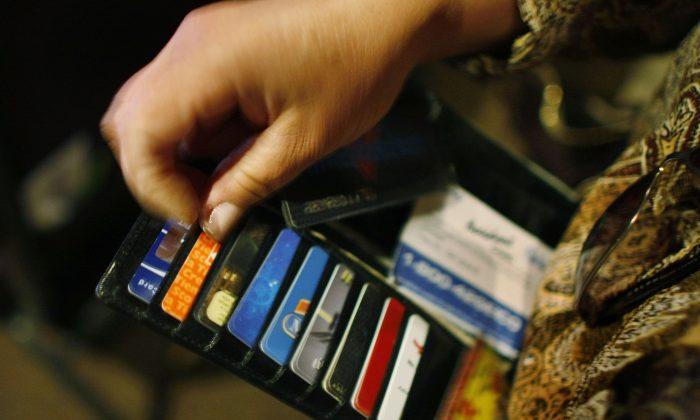American households took on $1.02 trillion in new debt in 2021, the most in 14 years, at levels not seen since before the 2008–09 financial crisis.
The higher borrowing is fueled in part by rising prices, as consumers cope with the strongest inflation seen since the early 1980s.
Meanwhile, central bank planners and world leaders are facing much criticism during the inflation crisis.
The debt increase, led by auto and home loans, is the largest rise since a $1.06 trillion jump in 2007, with total consumer debt now sitting at around $15.6 trillion, compared with $14.6 trillion a year earlier.
The total debt balance is now $1.4 trillion higher than it was at the end of 2019.
Average U.S. home prices went up almost 20 percent in 2021, boosting mortgage balances and pricing out many middle-class buyers.
Rising prices for new and used cars drove auto-loan originations up a record $734 billion.
Over $4.5 trillion in mortgages were originated in 2021, the highest on record since the Fed started recording the numbers in 1999.
Mortgage balances increased by $258 billion in the fourth quarter to $10.93 trillion at the end of December.
The New York Fed said that 87 percent of the new debt is tied to homes that can appreciate over time, which can favor borrowers.
Subprime borrowers account for just 2 percent of the mortgage debt originating in the fourth quarter of 2021, down from an average of 12 percent in the years before the previous financial crisis.
The rise in consumer borrowing isn’t cause for alarm, said economists at the New York Fed, as households, supported by increased savings and higher incomes, seem to be handling the larger debt loads well so far, according to their figures.
Financial gains increased across all income levels during the pandemic according to the NY Federal Reserve report, though most of the gains were accrued by the top wealthiest Americans.
Delinquencies on U.S. consumer loans are still hovering at record lows in part due to savings accumulated earlier in the pandemic and forbearance programs.
However, borrowers who have fared less well during the pandemic could have a harder time keeping up with their debt payments later, said New York Fed researchers.
Student loan debt payments are expected to resume in a few months.
The New York Fed said in its quarterly report on household debt and credit that Americans added $52 billion to their credit card balances in the fourth quarter of 2021, the largest quarterly jump on record, but still $71 billion lower than they were at the end of 2019.
In a sign that consumers are returning to their pre-pandemic spending habits, the 2021 holiday season saw an increase in demand for travel and entertainment, which boosted credit card balances in the final three months of the year.
Credit card balances fell sharply in early 2020, as the result of a decline in spending and the availability of stimulus money that allowed consumers to pay down their debt.
Total credit card balances stood at $856 billion at the end of December, down from $927 billion two years earlier.
Some borrowers anticipating higher interest rates may be taking advantage of lower borrowing costs, said Fed researchers, noting an increase in mortgage refinancing.
The Federal Reserve is expected to start raising interest rates in March and to begin selling off its stimulus bond holdings as it works to tame inflation.These actions by the Fed could increase consumer borrowing costs later this year.







Friends Read Free